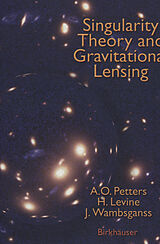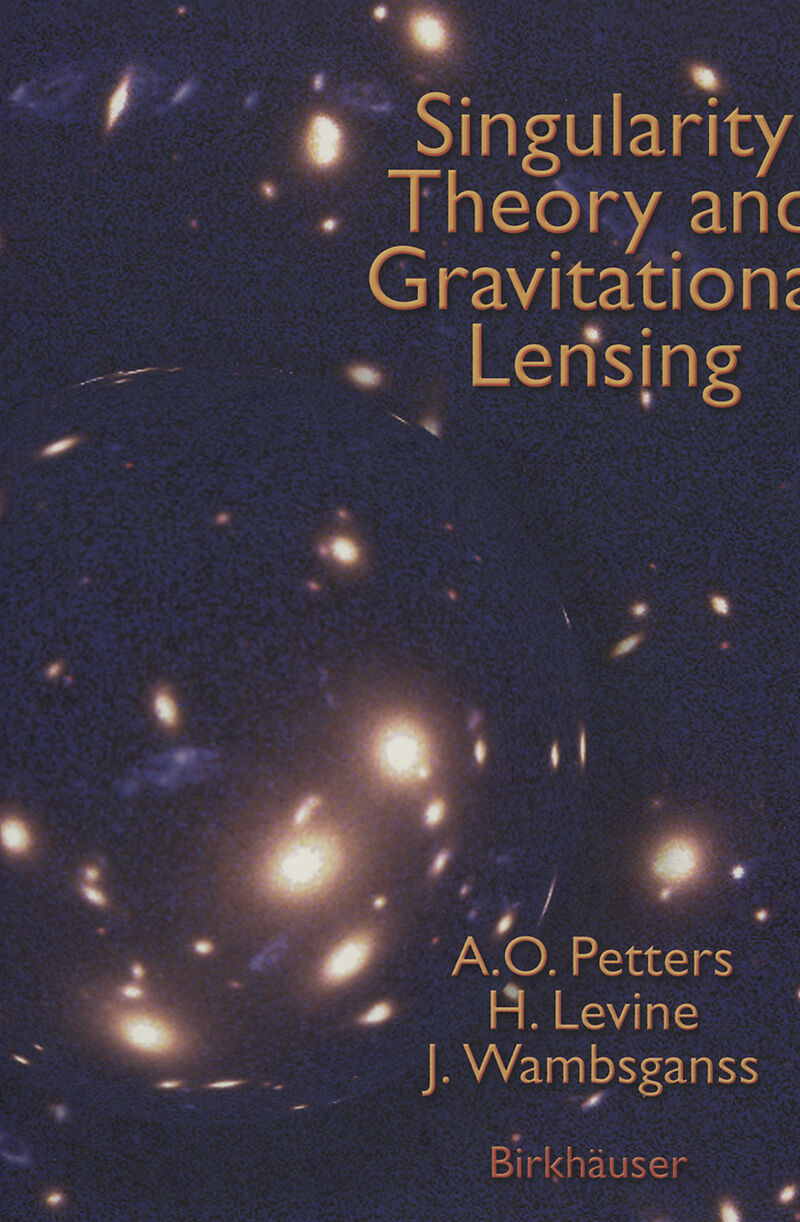Singularity Theory and Gravitational Lensing
Einband:
Fester Einband
EAN:
9780817636685
Untertitel:
Progress in Mathematical Physics 21
Autor:
Arlie O. Petters, Joachim Wambsganss, Harold Levine
Herausgeber:
Birkhäuser Boston
Auflage:
2001
Anzahl Seiten:
632
Erscheinungsdatum:
15.06.2001
ISBN:
0817636684
First monograph to develop a mathematical theory of gravitational lensing. Introductory chapters present historical highlights and astrophysical aspects of the subject. Main part of the book employs ideas and results of singularity theory to put gravitational lensing on a rigorous mathematical foundation to solve certain key lensing problems. Many results published for the first time. Includes examples, illustrations, bibliography and index. For a wide audience of students, mathematicians, mathematical physicists, astrophysicists, and physicists.
"The time is ripe for a comprehensive volume explaining gravitational lensing to mathematicians and reviewing relevant singularity theory for astrophysicists. This is such a book. [It] . . . is accessible and attractive, . . . ranging widely through the history, physics and mathematics to paint a full picture of this . . . theory. This most attractively presented book summarizes current mathematical methods in the field and sets the stage for further exciting developments . . . A collaboration between a mathematical physicist, a mathematician, and a physicist, it has something for everybody." Mathematical Reviews "This is a well-developed monograph on gravitational lensing both from the observational and from the mathematical points of view. However, also independent of the present interest in gravitational lensing, this book is a good source for several types of singularity theories . . . index and bibliography are very well done." Zentralblatt Math "The rather voluminous monograph to be reviewed here covers both astrophysical and mathematicsl aspects of gravitational lensing. The scientific backgrohnd of the three authors guarantees that they are the right persons for such an enterprise. Arlie Petters is one of very few scientists who are competent in mathematics as well as in astrophysics. His coauthors are a pure astrophysicist and a pure matheamtician: Joachim Wambsganss is aleading expert on gravitational lensing as a tool in astrophysics and Harold Levine has made important contributions to the theory of signularities of maps in the 1960s. . . "It is not much of an exaggeration to say that large parts of this monograph can serve as a self-contained matheamtics text-book on the theory of singularites of maps and related subjects, and even a particularly well-written one. So I would not hesitate to recommend it to pure matheamticians who will find a fineexposistion of a subject from their field, along with applicaions to astrophysics which should be very well readable for them. I also recommend the book to pure astrophysicists, because it contains a lot of material which has a high atrophysical relevance. . . If one compares to tbook by Petters, Leven and Wambsganss with the earlier mongraph on gravtiational lenses by Schneider, Ehlers and Falco, one finds that there is not very much overlap. The two books rather complement each other." ---Gen. Relativ. Gravit.
Klappentext
This monograph, unique in the literature, is the first to develop a mathematical theory of gravitational lensing. The theory applies to any finite number of deflector planes and highlights the distinctions between single and multiple plane lensing. Introductory material in Parts I and II present historical highlights and the astrophysical aspects of the subject. Among the lensing topics discussed are multiple quasars, giant luminous arcs, Einstein rings, the detection of dark matter and planets with lensing, time delays and the age of the universe (Hubble's constant), microlensing of stars and quasars. The main part of the book---Part III---employs the ideas and results of singularity theory to put gravitational lensing on a rigorous mathematical foundation and solve certain key lensing problems. Results are published here for the first time. Mathematical topics discussed: Morse theory, Whitney singularity theory, Thom catastrophe theory, Mather stability theory, Arnold singularity theory, and the Euler characteristic via projectivized rotation numbers. These tools are applied to the study of stable lens systems, local and global geometry of caustics, caustic metamorphoses, multiple lens images, lensed image magnification, magnification cross sections, and lensing by singular and nonsingular deflectors. Examples, illustrations, bibliography and index make this a suitable text for an undergraduate/graduate course, seminar, or independent these project on gravitational lensing. The book is also an excellent reference text for professional mathematicians, mathematical physicists, astrophysicists, and physicists.
Inhalt
I. INTRODUCTION.- 1 Historical Highlights.- 2 Central Problems.- II. ASTROPHYSICAL ASPECTS.- 3 Basic Physical Concepts.- 4 Physical Applications.- 5 Observations of Gravitational Lensing.- III. MATHEMATICAL ASPECTS.- 6 Time Delay and Lensing Maps.- 7 Critical Points and Stability.- 8 Classification and Genericity of Stable Lens Systems.- 9 Local Lensing Geometry.- 10 Morse Inequalities.- 11 Counting Lensed Images: Single-Plane Case.- 12 Counting Lensed Images: Multiplane Case.- 13 Total Magnification.- 14 Computing the Euler Characteristic.- 15 Global Geometry of Caustics.- Index of Notation.

Leider konnten wir für diesen Artikel keine Preise ermitteln ...
billigbuch.ch sucht jetzt für Sie die besten Angebote ...
Die aktuellen Verkaufspreise von 6 Onlineshops werden in Realtime abgefragt.
Sie können das gewünschte Produkt anschliessend direkt beim Anbieter Ihrer Wahl bestellen.
Loading...
Die aktuellen Verkaufspreise von 6 Onlineshops werden in Realtime abgefragt.
Sie können das gewünschte Produkt anschliessend direkt beim Anbieter Ihrer Wahl bestellen.
| # | Onlineshop | Preis CHF | Versand CHF | Total CHF | ||
|---|---|---|---|---|---|---|
| 1 | Seller | 0.00 | 0.00 | 0.00 |
